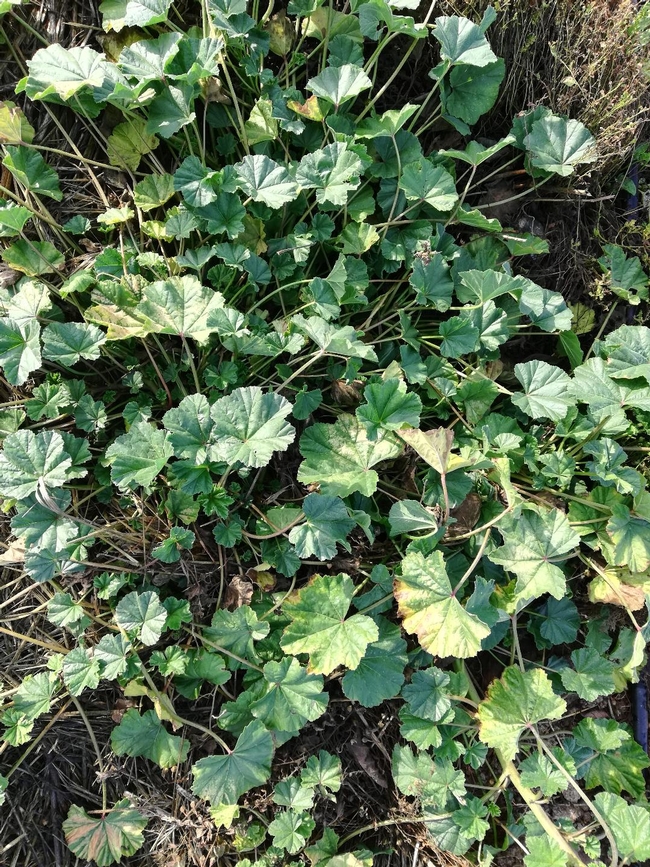Advice for the Home Gardener from the Help Desk of the
UC Master Gardener Program of Contra Costa County
Response from the MGCC's Help Desk: Thank you for contacting the UC Master Gardener Program Help Desk with your request for weed identification. We really appreciate the picture that you sent along too. It was very helpful.
From your picture, this appears to be a weedy mallow. There are two types of weedy mallow that are common in California, the common mallow (Malva neglecta) and little mallow (Malva parviflora). Both of these mallows are also known as cheeseweed.
Malva (mallow) species look very similar. Neglecta and parviflora can only be distinguished by comparing the flower petals and fruit shape. Flowers bloom nearly year-round. They are small, white to pale pink and about 2/5 of an inch in diameter. Flower clusters are found at the bases of leaf stalks. Neglecta petals are longer than parviflora petals and the fruit of neglecta are smooth while those of parviflora are wrinkled. The fruit for both is sometimes described as looking like a tiny wheel of cheese with wedge-shaped sections therefore giving them the common name of cheeseweed. Each wedge of the fruit contains one reddish brown kidney shaped seed.
These annuals begin growing from seed with the first rains in the fall and quickly develop a deep taproot that becomes woody and makes the plant difficult to remove by hand or even with tools (as you have found). Left alone, these plants will spread and can grow between 2 to 5 ft. tall.
- Mallows are best controlled mechanically by hoeing or pulling out young plants.
- Young mallow can also be killed by cutting them off at the crown but older plants may re-sprout from the crown.
- Solarization is not effective for mallow control nor is flaming.
- Insects do feed on mallows but there are none that are specialized for control of these weeds.
- There are no chemical controls available for home use that are effective for controlling mallows. Mallow is one of the few weeds that glyphosate (“RoundUp”) is ineffective in controlling.
- Cultural control can be done by planting competitive desirable plants in areas where mallow is a problem. The shade provided by these plants will reduce germination and growth of mallow seedlings.
- Mulches can also be effective. At least 3 inches of organic mulch, such as bark or wood chips, will make it difficult for the seedling to emerge and will screen out the amount of light that mallow requires to effectively sprout. It is important to maintain the needed depth otherwise, the seedlings can push through and become established again.
I'm including two links that have additional information:
http://ipm.ucanr.edu/PMG/PESTNOTES/pn74127.html
http://ipm.ucanr.edu/PMG/WEEDS/little_mallow.html
I hope this information is helpful to you. Please let us know if you have any questions.
Help Desk of the UC Master Gardener Program of Contra Costa County (JMA)
Note: UC Master Gardeners Program of Contra Costa's Help Desk is available almost year-round to answer your gardening questions. Except for a few holidays (e.g., last 2 weeks December), we're open every week, Monday through Thursday for walk-ins from 9:00 am to Noon at 2380 Bisso Lane, Concord, CA 94520. We can also be reached via telephone: (925) 608-6683, email: ccmg@ucanr.edu, or on the web at http://ccmg.ucanr.edu/Ask_Us/. MGCC Blogs can be found at http://ccmg.ucanr.edu/HortCoCo/ You can also subscribe to the Blog (//ucanr.edu/blogs/CCMGBlog/)